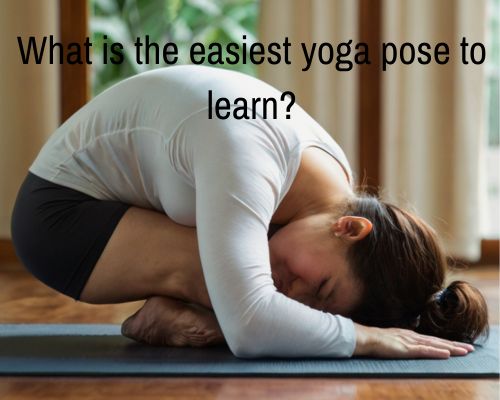When starting a yoga journey, one of the most common questions is, “What is the easiest yoga pose to learn?” This query resonates strongly with beginners seeking a gentle introduction to yoga’s transformative benefits. Living in Mornington, Australia—a hub of wellness and coastal beauty—there’s no better place to start your yoga practice. Whether you’re a Mornington local or visiting this charming seaside town, with Bikram Yoga Mornington, this guide explores the simplest yoga poses for beginners and how they align with the tranquil lifestyle of Mornington.

Why Start with Easy Yoga Poses?
Yoga offers a gateway to better physical and mental well-being. For beginners, easy poses provide a safe entry point, helping you build confidence, improve flexibility, and prevent injuries. Mornington’s serene environment, with its stunning beaches and wellness-focused community, is perfect for embracing the calming benefits of yoga.
Starting with beginner-friendly poses also allows you to establish a routine without feeling overwhelmed. Consistency is key to making yoga a sustainable part of your life, and mastering foundational poses will pave the way for more advanced asanas.
The Easiest Yoga Pose to Learn: Child’s Pose (Balasana)
Child’s Pose, or Balasana, is widely regarded as one of the easiest and most restorative yoga poses for beginners. This gentle posture involves kneeling on the floor, sitting back on your heels, and extending your arms forward while lowering your chest to the mat. Here’s why it’s ideal for beginners:
- Ease of Practice: Child’s Pose requires no flexibility or prior experience.
- Stress Relief: The pose encourages relaxation and calms the mind.
- Physical Benefits: It gently stretches the hips, thighs, and lower back.
This pose is particularly fitting for Mornington residents who might want to unwind after a long day exploring the town’s wineries, coastal trails, or bustling markets.
How to Perform Child’s Pose
To get started with Child’s Pose, follow these simple steps:
- Kneel on the Mat: Position yourself with your knees slightly apart and your big toes touching.
- Lower Your Chest: Gently sit back onto your heels and extend your arms forward as you lower your chest toward the mat.
- Relax Your Forehead: Rest your forehead on the mat for a grounding and calming effect.
- Breathe Deeply: Take slow, deep breaths, allowing your body to relax with each exhale.
This beginner-friendly posture is an excellent starting point for anyone in Mornington looking to incorporate yoga into their daily routine.
Other Easy Yoga Poses to Explore
While Child’s Pose is a fantastic place to begin, there are other simple poses that are equally beneficial for beginners. Here are a few to consider:
1. Mountain Pose (Tadasana)
Mountain Pose is another foundational yoga posture that helps improve posture and body awareness. To practice:
- Stand tall with your feet together.
- Engage your core and lift your arms overhead.
- Breathe deeply and feel the grounding sensation through your feet.
Mountain Pose is perfect for a quick yoga break, whether you’re overlooking the stunning Mornington Peninsula or enjoying the peaceful surroundings of Mornington Park.
2. Cat-Cow Pose (Marjaryasana-Bitilasana)
This gentle flow between Cat Pose and Cow Pose stretches the spine and promotes flexibility. It’s particularly helpful for anyone with a sedentary lifestyle. To perform:
- Start on your hands and knees in a tabletop position.
- Alternate between arching your back (Cow Pose) and rounding it (Cat Pose) with each breath.
The rhythm of this pose makes it ideal for Mornington locals looking to start their mornings with movement and mindfulness.
3. Downward Dog (Adho Mukha Svanasana)
Although slightly more challenging, Downward Dog is often included in beginner sequences for its full-body benefits. It stretches the hamstrings, shoulders, and calves while improving circulation. To perform:
- Begin in a tabletop position.
- Lift your hips toward the ceiling, forming an inverted V-shape with your body.
Practicing this pose on Mornington’s beaches at sunrise could enhance its calming and rejuvenating effects.
Local Yoga Studios and Outdoor Spots in Mornington
Starting your yoga practice in Mornington offers unique opportunities to connect with nature and the local community. Here are some options:
- Yoga Studios:
- Bikram Yoga Mornington: This welcoming space offers beginner-friendly classes designed to introduce you to the basics of yoga.
- Soulful Yoga Mornington: Known for its serene ambiance and skilled instructors, this studio is perfect for those seeking a relaxing introduction to yoga.
- Outdoor Yoga:
- Mornington Park: With its lush greenery and coastal views, this park is an excellent spot for outdoor yoga.
- Mills Beach: Practicing yoga on the soft sand, with the sound of waves in the background, adds a meditative quality to your session.
Health Benefits of Yoga for Mornington Residents
Yoga is more than just a form of exercise; it’s a holistic approach to health and well-being. For Mornington locals, these benefits are amplified by the town’s emphasis on active and mindful living. Here’s how yoga can enhance your lifestyle:
- Physical Health: Yoga improves flexibility, strengthens muscles, and promotes better posture.
- Mental Clarity: Regular practice reduces stress and enhances focus, helping you stay present and enjoy Mornington’s laid-back charm.
- Community Connection: Joining yoga classes or practicing in outdoor settings allows you to connect with like-minded individuals in Mornington.
Tips for Starting Yoga as a Beginner
If you’re new to yoga, here are some practical tips to help you get started:
- Start Small: Begin with short, 10–15 minute sessions to build consistency.
- Wear Comfortable Clothing: Opt for breathable, stretchy attire suitable for movement.
- Invest in a Good Mat: A high-quality yoga mat provides comfort and stability.
- Practice Mindful Breathing: Focus on your breath to enhance relaxation and mindfulness.
By following these tips, you can confidently embark on your yoga journey in Mornington.
The Perfect Pairing: Yoga and Mornington’s Lifestyle
Mornington’s blend of coastal beauty and wellness-focused living makes it an ideal place to embrace yoga. Imagine starting your day with a calming Child’s Pose on the beach, followed by a stroll through Main Street’s cafes and shops. Yoga not only complements the town’s tranquil lifestyle but also enhances your ability to fully appreciate Mornington’s natural beauty.
Conclusion
For beginners wondering, “What is the easiest yoga pose to learn?” the answer lies in starting simple, with poses like Child’s Pose and Mountain Pose. These foundational postures are accessible, relaxing, and align perfectly with Mornington’s emphasis on holistic well-being.
Whether you’re practicing in a local studio, at the park, or on the beach, yoga can transform your life—one pose at a time. So, grab your mat, take a deep breath, and let Mornington’s serene environment inspire your yoga journey.

